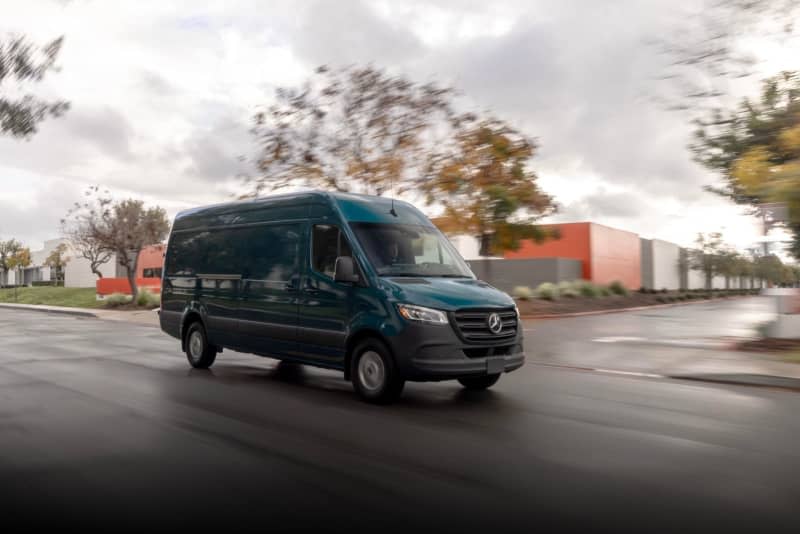Mercedes electric Sprinter van gets more sustainable

Mercedes has made its popular electric Sprinter van even more efficient by boosting its emission-free range and beefing up the batteries.
The revamped van, unveiled in Los Angeles and set to be launched in other markets later this year, features an improved electric drive and will be priced in Europe at around €40,000 and rising to more €70,000 for better-equipped versions.
The van is now in production at Mercedes’ Charleston, South Carolina, plant, as well as at the company’s German plants in Ludwigsfelde and Düsseldorf. The manufacturer has said it will only sell electric vehicles after 2030.
Buyers of the new electric van get, above all, more battery capacity for their money as this goes up from a previous 47 kWh to 56 kWh for even the smallest battery.
The current Sprinter generation with a combustion engine has been available since 2018. A simple electric version, the E-Sprinter, has also been available on this basis since 2020.
Ahead of the new electric platform called Van.EA which comes onto the market in the middle of the decade, Mercedes has completely overhauled the electric van.
"The new van is developed from scratch as a purpose-built electric vehicle, fully leveraging the advantages of the new technology," said van development head Andreas Zygan,
While the first E-Sprinter had the engine and drive at the front, the new generation has it at the rear.
According to Mercedes, the permanently excited synchronous motor (PSM) weighs just 130 kilograms and is available in two power levels, although the engines themselves hardly differ.
The lower power level achieves a peak output of 100 kW (136 hp), while the higher power level is 150 kilowatts or around 204 hp. The continuous output in both cases is 80 kW (109 hp). Mercedes gives the maximum torque as 400 Nm, which is available for at least 30 seconds. The gear ratio of both engine variants is 13.2, with a top speed of up to 120 km/h.
Because Mercedes integrates the new components better in special modules in the body shell, the designers say a variety of extensions are possible. The range starts with a panel van with two wheelbases and two roof heights. However, all the body variants from minibus to camper van are planned for the future, according to Mercedes.

